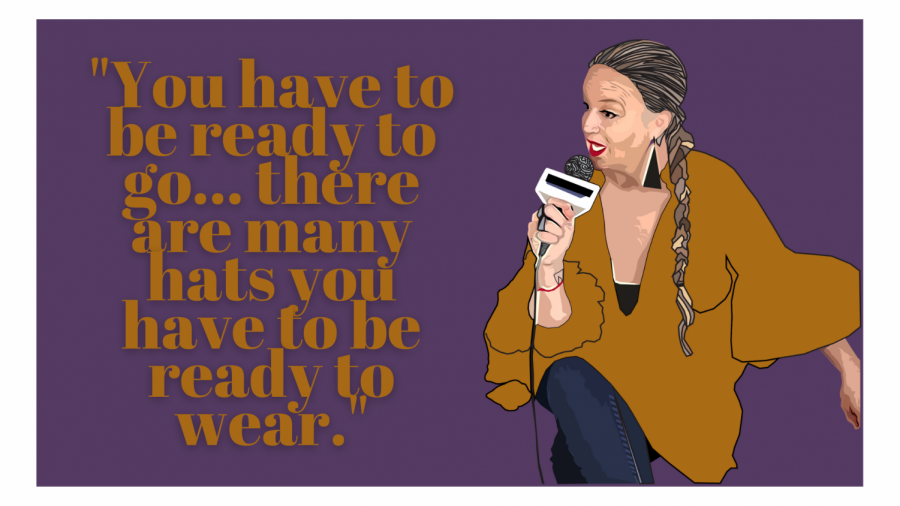With 35 years of experience in the radio and television industry, Sterling James is advising young women entering the field to be ready to go and finding balance in their femininity working in a male-dominated career.
James, a well-known radio personality and SF State graduate, shared her industry experience and secrets on Wednesday’s Womxn’s History Month workshop, hosted by The Depot, the on-campus venue for SF State. The virtual event emphasized the culture and unspoken rules of the entertainment industry.
The workshop also spotlighted James’ career and journey throughout her 35 years of entertainment experience. James focused on how to carry oneself as a woman in the business.
“Come prepared and ready to handle anything that’s put in front of you and versatile that when things flip, that if you don’t know the answer you can find the answer so that you can maintain your viability. Male or female,” James said.
Hosted by Kerry Fiero, event planner and adjunct professor at SF State, the workshop was designed to entail lessons learned on James’ personal journey through the industry by addresses challenges and struggles in the field.
“I think men and women both celebrate women and their achievements. The two women that I have booked for March are not only incredible, professionals in their career but women,” Fiero said.
According to James, women in the industry often have to battle constricting stereotypes of either being the bossy or meek. She elaborated, saying, “You gotta find a balance between your vanity and your humility. Put yourself in a position where nobody has nothing to say nothing about you.”
Women have long been in the radio work force, since the Great Depression and World War 2. A multitude of personalities stretch across the history of radio, from the 1930s until present time, with audio recording of these pioneering storytellers – Olive Shapley in 1934 at BBC and Betty Wason as a female war correspondent during the second world war to name but a few.
Women make up about 49% of the entertainment workforce. But specifically dissecting the radio and television sector, women of color still face a lack of representation in the newsroom and women generally are not found in roles of leadership. According to a study conducted in 2017 by the Radio and Television Digital News Association (RTDNA) and Hofstra University, “Radio Station leadership included fewer people of color, and fewer women, than in 2016.”
Paloma Abarca, the manager of The Depot, elucidated the importance of these Womxn History Month workshops. These events hold a soft spot in her heart, as she too is an aspiring young woman looking to enter the entertainment field.
“It’s important to me to showcase that in a male dominated industry and career, there are women making moves,” Abarca said.
While women are receiving air-time, the outsourcing of management in companies is limiting the occupational growth of women in-house to the C-Suite. Commonly known as the glass-ceiling, the promotion rate is less than 1%, accounting less than three out of 10 executive.
Of the 1,110 radio stations participating in the survey, less than half of those stations have a single woman on their news staffs. Women report for about 40.7% of the personnel in major markets but only 25.8% as executive and the inequity only deep dives when we look at numbers representing women of color in any roles at a station, “women of color represent 17%,” McKinsey & Company recorded in its research.
“You have to be ready to go … there are many hats you have to be ready to wear,” James said.







